
Pistol calibers suck. Relatively speaking, of course. If you don’t have anything else to defend yourself, you’d rather have a 9mm than the six months of Jiu-Jitsu you took in the 80’s. But if you have to choose between a 9mm and a 5.56 NATO, the rifle caliber wins every time.
That’s the line of thinking behind the spate of personal defense weapons (PDW’s) we’ve seen in recent years. These firearms come in pistol-sized packages but are chambered in rifle calibers, which offers the power of the latter with the footprint of the former (more or less).
Springfield has entered the fray with its feature-rich Saint Edge PDW. It relies on some of the technology from Maxim Defense’s groundbreaking PDX but comes in about $600 cheaper. Chambered in 5.56 NATO, the Edge PDW measures only 18.75” with the brace collapsed and features the Maxim Muzzle Booster to redirect the sound signature and control recoil.

It’s still a flamethrower, but it’s the kind of flamethrower you want to have around the next time things go sideways.
Specifications
CALIBER: 5.56x45mm NATO (.223 REM)
BARREL: 5.5″ CMV, Melonite®, 1:7
UPPER RECEIVER: Forged 7075 T6 Aluminum, Type III Hardcoat Anodized, Forward Assist, M4 Feed Ramps
LOWER RECEIVER: Machined 7075 T6 Billet Aluminum, Type III Hardcoat Anodized, Accu-Tite™ Tension System
BOLT CARRIER GROUP: Compact BCG w/ 9310 Steel Bolt, HPT/MPI, Melonite®
GAS SYSTEM: Direct Impingement Pistol-Length, Low-Profile Pinned Gas Block
HANDGUARD: Aluminum Free Float w/ SA Locking Tabs, Forward Handstop, M-Lok®
PISTOL BRACE: Maxim Defense™ SCW, 5-Position Adjustable
TRIGGER: Nickel Boron Coated Flat GI
MUZZLE DEVICE: Maxim Muzzle Booster
RECEIVER EXTENSION: Integral to Maxim Defense™ System
RECEIVER END PLATE: Maxim Defense™
BUFFER ASSEMBLY: Integral to Maxim Defense™ System
CHARGING HANDLE: SA Midsize
SAFETY SWITCH: Ambidextrous
TRIGGER GUARD: Integral to Receiver
GRIP: Reptilia® CQG™ Pistol Grip
MAGAZINES: (1) 20-Round Magpul® PMAG®
WEIGHT: 5lbs 11oz
LENGTH: 18.75″ – 23.5″
MSRP: $1699
Features, Features, Features!
I mentioned that this pistol is feature-rich, and I wasn’t kidding. I don’t have the space to run through all this firearm’s good qualities, but I wanted to highlight a few. All these features aid in either shortening the overall length of the pistol, ensuring it will hold up under hard use, or both.
First, the gas block is pinned rather than secured with a set screw. I know, I know. Lots of guys run gas blocks with a set screw, and they hold up just fine. But if you want an added layer of security, a pinned block is the way to go. Pinning the block ensures it won’t shift or move even when exposed to high heat or after thousands of rounds. Is it necessary? Probably not, depending on your use. But is it nice? Sure is.
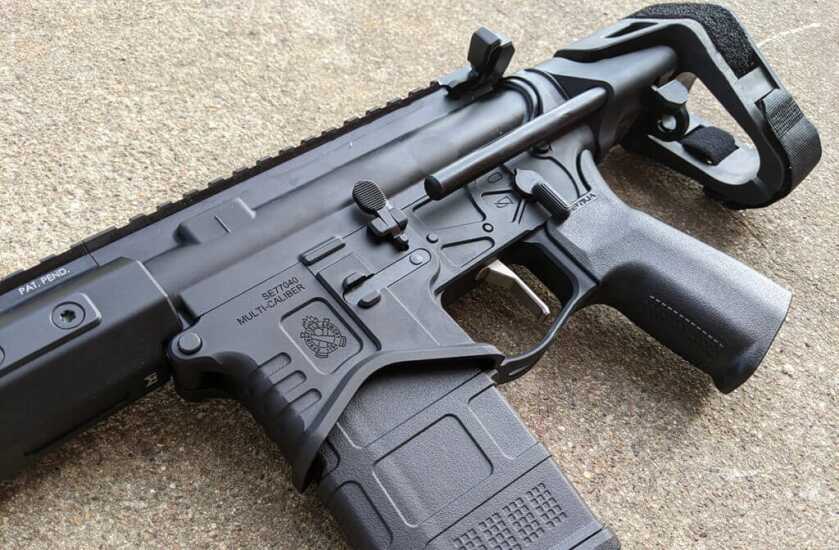
The core parts are all constructed from high-quality materials. The upper is constructed from forged 7075 T6 aluminum and the lower is machined 7075 T6 billet aluminum with a Type III anodized hard coat. The barrel is Chrome-Moly Vanadium with a Melonite finish, and the bolt is 9310 steel. All parts are constructed to last, and I found no rough machining marks or imperfections when I took the Edge PDW apart.
Shootability and reliability are excellent as well. The Maxim Defense™ SCW 5-position adjustable arm brace keeps the overall length to a minimum, and the Reptilia CQG pistol grip also slightly shortens the standard grip footprint. The Reptilia features a more pronounced vertical grip angle, anti-slip front and rear texture, and an enhanced beaver tail design. I found it to be surprisingly comfortable, and it allowed my hand to find purchase higher on the grip for better control.
The bolt carrier and buffer system also keep the pistol as small as possible. The bolt carrier is shortened, and the H1 buffer nests inside the rear of the carrier, which shortens the overall length by about 1.5 inches. The bolt carrier group is also high pressure tested (HPT) and magnetic particle inspected (MPI).
Finally, the Maxim Muzzle Booster helps mitigate the muzzle blast and noise for which these pistols are infamous. The muzzle booster “flattens the curve on exhausted gasses, redirects the sound signature [away from the shooter], and significantly reduces recoil,” according to Springfield’s website. They aren’t kidding – the Booster is a marked improvement over a standard birdcage brake.
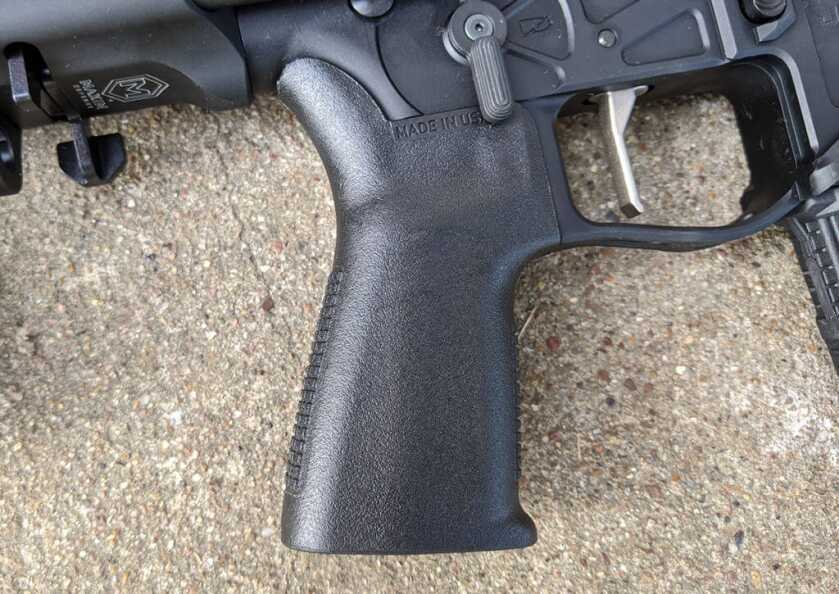
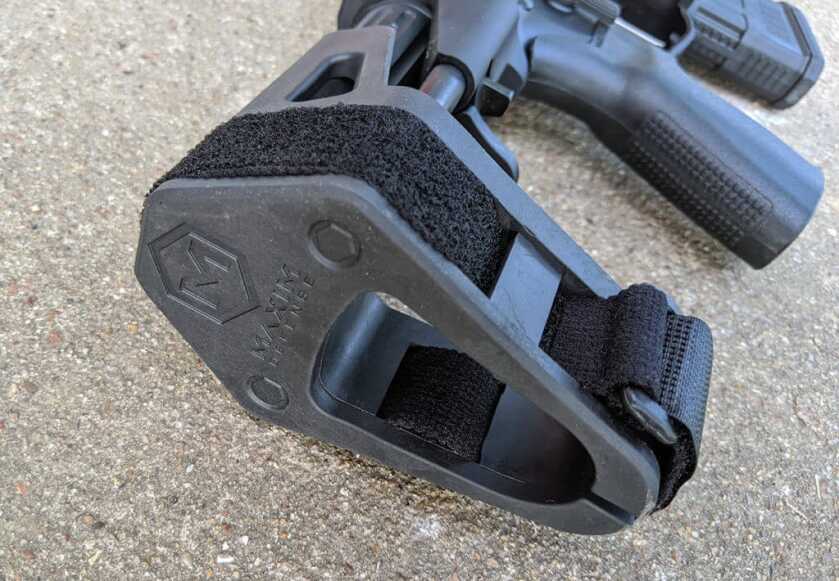
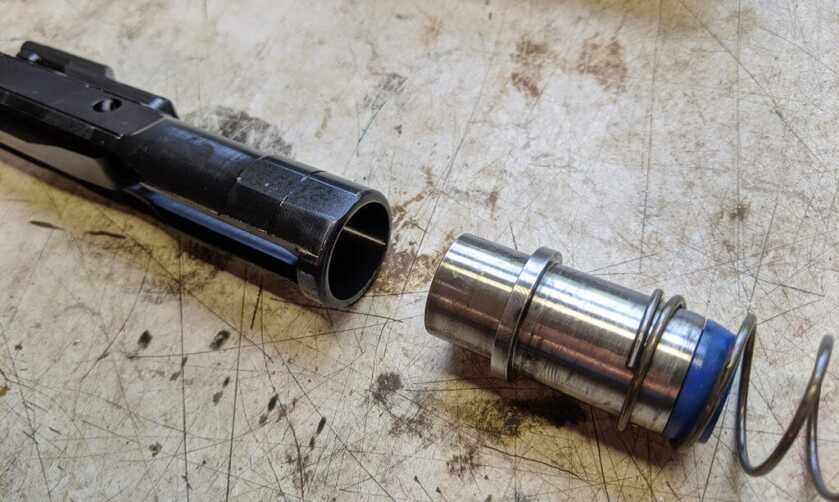
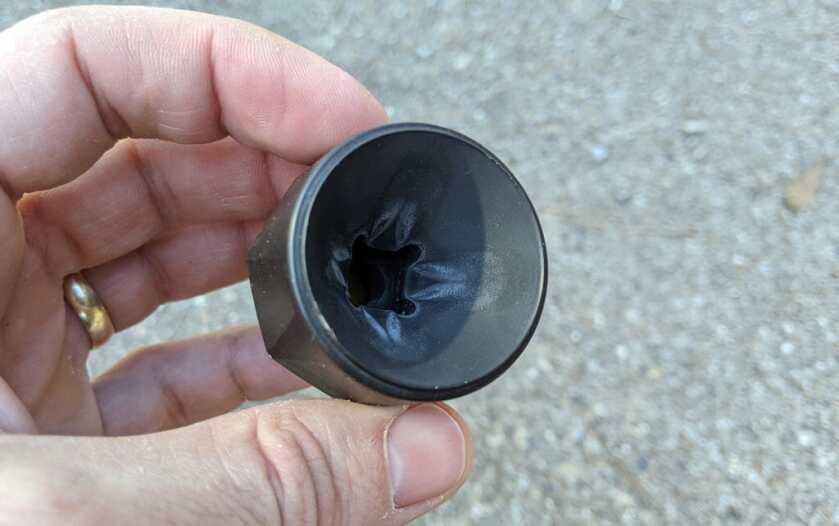
The Muzzle Booster doesn’t negate all sound and recoil. I still found myself wearing earplugs along with my muffs, and you’re in for some mean looks if you take this gun to a busy range. Still, while I wouldn’t want to shoot this thing without ear protection unless my life depended on it, it’s perfectly comfortable to shoot provided the right equipment.
Can’t You Just Suppress It?
Unfortunately, this isn’t the kind of gun that can easily be suppressed. I’ll let the suppressor experts expound upon this in the comments, but many suppressors come with a minimum barrel length for reliable use or to stay under warranty.
Usually, the minimum is something around 10 inches, but it all depends on the manufacturer. Dead Air’s Nomad-30 doesn’t come with any barrel length restrictions, but SilencerCo recommends using their Omega 36m only on barrels longer than 10 inches. You can decide for yourself whether you want to subject any suppressor, no matter the rating, to the blast of a 5.56 NATO from a 5.5” barrel. I probably wouldn’t.
You’ll also likely run into reliability issues, and since the gas block isn’t adjustable, you’d probably have to swap that out, too.
I’m not saying it’s not possible to suppress Springfield’s PDW. It might be. But it’s probably more headache than it’s worth.
Are You Sure This Gun is Legal?

The ATF is the elephant in the room right now when it comes to AR pistols fitted with a brace. For the last several years, our overlords in Washington have allowed gun owners to shoulder “large format” or rifle-based pistols if they are fitted with an arm brace. But last year, they seemingly reversed their decision, telling the firearms manufacturer Q, LLC., that their “Honey Badger” pistol is actually a short-barreled rifle subject to NFA restrictions.
But then, after a backlash from the firearms community, the ATF placed a 60-day stay on their decision as they reviewed the Honey Badger further (and waited for a Biden administration to take control).
Then, in December, they released a set of supposed guidelines, which they promptly rescinded after another round of backlash from the firearms community and pro-gun members of Congress.
In short, the status of pistol braces is still up in the air. If the ATF’s original edict about the Honey Badger stands, it would likely apply to Springfield’s PDW as well. Since both firearms are classified as pistols and use a collapsible arm brace, it’s possible that the Springfield wouldn’t be exempt from the new classification.
So, what does this mean if you purchase the PDW? You’d have to either re-barrel the firearm with something 16” or above, or pay the $200 tax stamp to make the pistol an NFA-compliant Short Barreled Rifle. The latter option isn’t the end of the world. It requires some extra paperwork and some extra cash, but it would maintain the compact size that makes the PDW unique.
How’s it Shoot?
In a word, it shoots great. The PDW is light, maneuverable, and accurate, and I found myself shooting way more rounds than I had planned on the days I took it to the range. I just had a hard time putting it down. Its light weight makes it comfortable to shoot from any position, and transitioning from one target to the next feels natural. With a red dot on the top rail and a man-sized target 60 yards away, it’s hard to imagine having more fun at a range.
My one beef is about the trigger. It looks cool – I’ve always loved the flat-faced design – but the pull isn’t much better than a standard GI model. I didn’t notice the heavy pull while I was blasting away at man-sized targets, but I expected a higher-end trigger in a pistol with so many other features. It’s not a deal-breaker – just something to keep in mind.
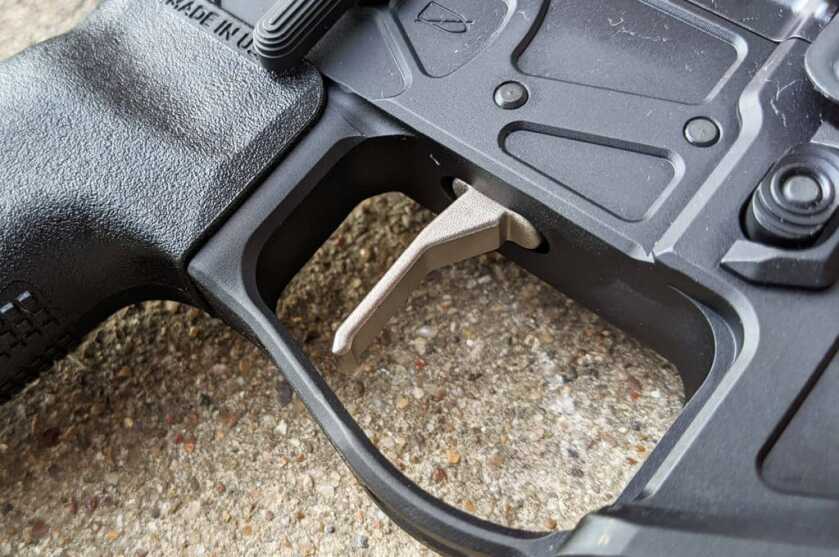
Accuracy is more than acceptable for a close-quarters self-defense firearm, though bullet weight/type and velocity make a difference. With a 1:7” twist, the PDW has a little trouble with the standard-velocity 55-grain .223 Rem. through the 5.5” barrel. At 50 yards using 55g FMJ .223 Rem, I was posting groups in the 3.5” range. But, interestingly enough, slower-moving 55g Federal ammo loaded with the Barnes TSX bullets posted much smaller groups at 50 yards (about 1.5”).
Moving up to bullets heavier than 60 grains made the PDW more consistently accurate. I had the best luck with some cheap-o 75-grain rounds from Federal, so I moved back to 100 yards with that load and shot a 2.5” group.
In the immortal words of Shrek, that’ll do, donkey.



Testing this firearm for accuracy is just academic, of course. At most self-defense distances, any of these loads will get the job done.
Final Shot
Clay Martin has argued pretty convincingly that, in his words, “SBRs in 5.56 suck.” His point is that barrels shorter than 16 inches can’t produce the velocity required to fragment the .22-caliber projectile and achieve maximum lethality. He’s right, of course. In an ideal world, you’d be able to access a 20-inch AR-15 and deploy it quickly when the SHTF.
But the perfect shouldn’t be the enemy of the good. Pistols like Springfield’s PDW may not be perfect, but they fill a vital role. They’re nearly as compact as a full-sized pistol, but they pack a much greater punch – even given some velocity limitations. If Springfield releases a PDW chambered in 300 Blackout, that would be worth a look. But if you’re looking for a serious self-defense tool in these uncertain times, you won’t find anything that checks more boxes than Springfield’s PDW.

I’ll keep my Diamondhead Transporter 300 Blackout Side Folding AR Pistol with 7.5 Inch Barrel. You can detach the barrel and fold the pistol brace so the whole thing will fit in a fanny pack.
5.56 out of a 5.5 inch barrel? Not on any range I want to be on! All that kinetic energy is just being converted into ear-splitting muzzle blast. I seriously wish they would restrict these guns on indoor public ranges. I have had them drive me off the indoor range, even with muffs over plugs. I really wanted one of these until I was around them indoors and realized that you WILL be deaf if you use one in your house to repel boarders without muffs and plugs. I had one fired near me indoors with my left plug not sealed properly, and I FELT my eardrum bouncing. I had just walked into the range when it was fired, I dropped my gear and plugged my left ear with my finger and RAN back through the door. No one has the right to damage others hearing. Shoot them outdoors and away from others. I have a 14 in. contender in 223 and I won’t shoot it indoors out of respect for others.
I wanted the article to be on the Springfield Armory Saint in 308/ 7.62x51mm but 223/556 is better than any pistol or pistol caliber pdw, in longer range out in the field engagements when range and power make all the difference, 200 to 1000 yards.
I know that most people just don’t understand but when you’re getting fired at from 500 to 800 yards away you definitely want something capable of returning the hurt, or if the bad guys have body armor you don’t want just a 9mm / paint ball gun against body armor.
Or again out in field if you might encounter a bear, mountain lion or a bull elk that want to kill you, with a 308 or 223 the sound alone might drive them away plus if you’re out hunting in pistol season you have a real advantage in power in range.
I’d like to have one in 308 just for the ease of handling and you can have one on CCW in free states.
Good out in the field, and home defense with the right ammunition.
Don’t limit your self when you can push the limits.
How about some truth?
Out of a 5.5″ barrel, most 9mms outperform a 5.5″ 5.56 firearm. 5.56 doesn’t start becoming ballistically better than a 9mm until you get to a 10″ barrel. Go look at Ballistics by the inch website. At 5.5″ a 223/5.56 has ~450ft-lb energy at 5.5″a 9mm gives around 450-475ft-lb with good ammo. the 223/5.56 starts performing at 10″ with ~800ft-lb energy…
Are you people ignorant or liars to sell a junk answer to the Personal Defence Issue?
Very silly for any number of reasons. It s simply a toy.
Dwight beat me to it – I don’t see the point in SBR 5.56’s. Without the ability to fragment, you’re shooting a high powered .22. Over penetration needs to be considered as well.
You know Dementia Joe is going to strong arm the ATF to change their opinion of these. Cool looking firearm though …
Personally , i think 10 inches is short enough . Unless you just like bowling ball sized muzzle flash , & lotsa noise. Just buy a Deagle , hell , they’re cheaper . Same effect , bigger bullet/energy ( in either .44 Mag or .50 AE.
Ok stand in front of one then let us know how much it sucks.
SBRs like this does indeed suck. Why bother with a long 5.56×45 cartridge, big magazines, lots of blast and a bulky AR platform when that 55 gr bullet @ 1900 fps only has 441 ft-lbs of energy? To put that into perspective a 9mm 115 gr +P JHP manages 1350 fps and 465 ft-lbs out of a typical 4.5″ handgun — superior to the 5.56 without a reasonable barrel to convert all that powder into kinetic energy for the bullet!